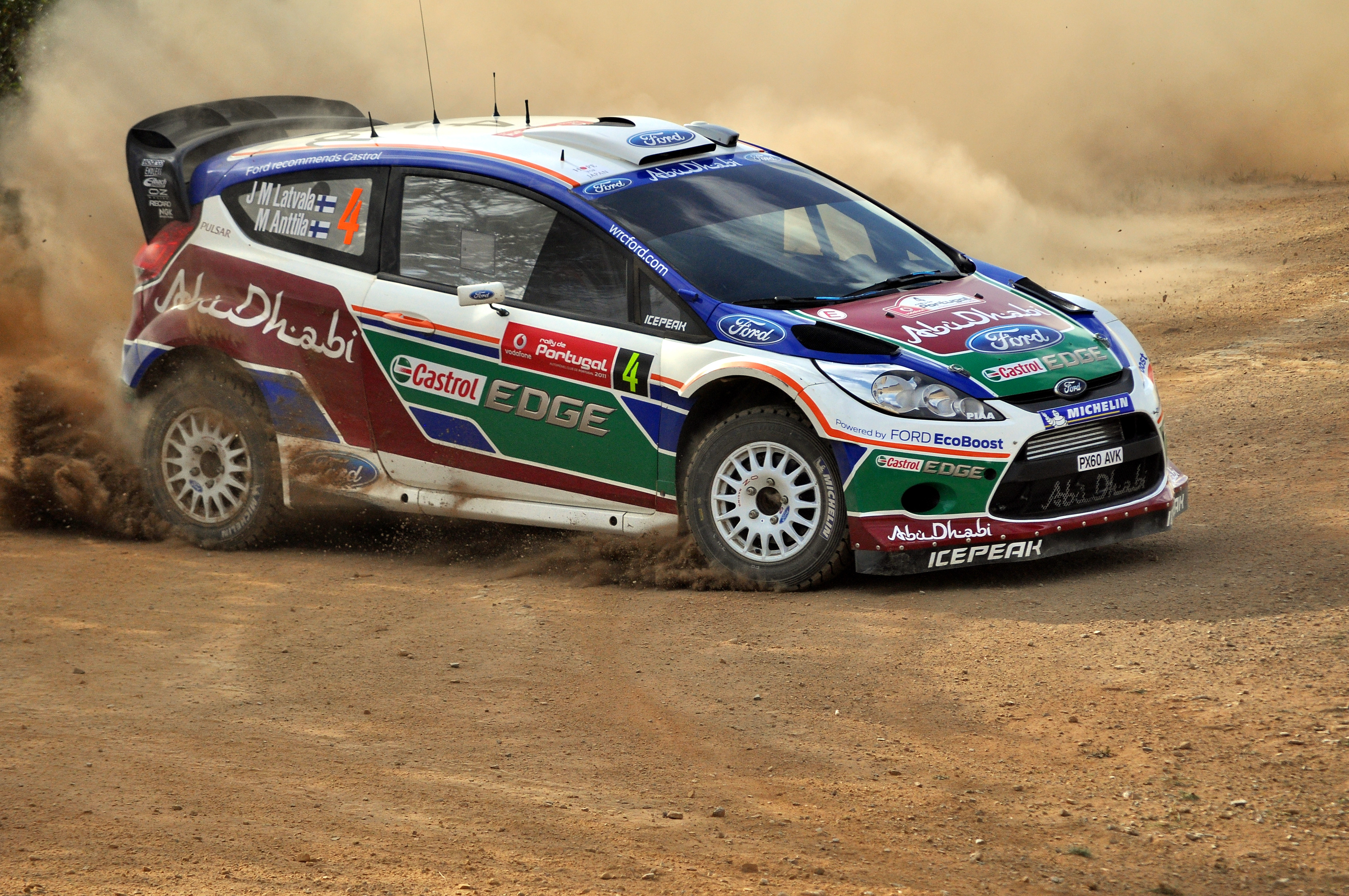- Login or Register
No account yet? Sign up
Tire load variation / mechanical grip is another one. I've known open wheel guys in lower levels than F1 go to the expense of titanium bolts and silver-plated nuts to save a few grams of unsprung mass. Going to 18" wheels, that's orders of magnitude more. Kilos.PhillipM wrote:I wouldn't be so sure about wheel mass only affecting longitudinal acceleration, there's a gyroscopic component in a spinning wheel...
Jersey Tom wrote:From first hand experience, yes. Cars in the UHP category with the big price tags are heavily driven by marketing. Don't forget that the vast majority of those cars don't see track time - they're on display. The tire companies involved usually don't even have any say in it. They're told, "Okay here's our prototype car.. we've already picked the springs and bars, kinematics, etc.. already have picked the rim and tire size.. figure out a tire design in that box which will give us the handling we want."
You both are going the same route... no benefit outside the track. Ok, I may agree but, who was talking about that?Cam wrote:Fashion. If you had a choice between comfy runners or skinny high heels, your choice depends on what you want others to think, not performance. James May:Anyway - tyres. I'm not suggesting this is a directly related topic and yet, in a way, it is. A few days ago, I was looking at a slightly tricked-up Nissan sitting on tyres that had about as much give in them as a supermodel's elbow, and I just didn't fancy it at all. Didn't look like it would keep you warm at night.
Then, in America a few weeks ago with Jeremy, we saw a Dodge Charger (the new one) on tyres that had obviously been up vomiting all night, and that looked really uninviting. I mean, the wheels looked positively unwell. Terrible, it was.
It's been going on for years, this sort of thing, and I think it's time we cried ‘enough'. Some tyres are now so thin it's difficult to tell what they actually are. It's fashion, obviously, because really low-profile tyres are of no benefit outside of the racetrack and only make the car steer and ride badly, so it will probably pass. I think this may be about to happen, and I do hope so.
F1 has also proven for years active wings are not required at the top level of motorsports...Cam wrote: F1 has proven for years that 'really low-profile tyres' are not required at the top level of Motorsport. The cars zip around quite fine. So why change? Fashion. Gucci needs to sell more hand bags.


Indeed there is. Can you propose a mechanism by which the gyroscopic effects would affect lap time?PhillipM wrote:I wouldn't be so sure about wheel mass only affecting longitudinal acceleration, there's a gyroscopic component in a spinning wheel...
Jersey Tom wrote:Tire load variation / mechanical grip is another one. I've known open wheel guys in lower levels than F1 go to the expense of titanium bolts and silver-plated nuts to save a few grams of unsprung mass. Going to 18" wheels, that's orders of magnitude more. Kilos.PhillipM wrote:I wouldn't be so sure about wheel mass only affecting longitudinal acceleration, there's a gyroscopic component in a spinning wheel...
You've got only part of the answer (the delta from increased translation mass) in guesstimating the acceleration delta. You still have to address the extra work you have to do to overcome the increased rotational inertia. Despite what's in other posts above, this delta will get added to the translation inertia guesstimate.henry wrote:Humble pie time.
I did some calculations using a spreadsheet rather than lying in the bath.
I got:
Increased mass of front wheel assembly - 2.4kg plus 5.3kg of referred mass from inertia.
Increased mass of rear wheel assembly -- 2.5kg plus 5.7kg of referred mass
That makes an additional 31.8kg of mass to be accelerated. Using the 0.4 secs per 10kg rule that woul put the lap time loss at 1.3 seconds due to mass and inertial effects.
I would expect teams to trade ballast to get rid of the increased mass so we are left with the inertial effect from the 22kg of referred mass. If the 0.4 rule applied to this the maximum lap time loss would be 0.88 seconds. Since the loss only applies to straight line acceleration when not traction limited my guess would be a lower loss, maybe 0.6 seconds from inertial effects alone.
Sorry, I'm not making myself clear.flyboy2160 wrote:You've got only part of the answer (the delta from increased translation mass) in guesstimating the acceleration delta. You still have to address the extra work you have to do to overcome the increased rotational inertia.henry wrote:Humble pie time.
I did some calculations using a spreadsheet rather than lying in the bath.
I got:
Increased mass of front wheel assembly - 2.4kg plus 5.3kg of referred mass from inertia.
Increased mass of rear wheel assembly -- 2.5kg plus 5.7kg of referred mass
That makes an additional 31.8kg of mass to be accelerated. Using the 0.4 secs per 10kg rule that woul put the lap time loss at 1.3 seconds due to mass and inertial effects.
I would expect teams to trade ballast to get rid of the increased mass so we are left with the inertial effect from the 22kg of referred mass. If the 0.4 rule applied to this the maximum lap time loss would be 0.88 seconds. Since the loss only applies to straight line acceleration when not traction limited my guess would be a lower loss, maybe 0.6 seconds from inertial effects alone.
What is this "reference mass" you are adding at the tire contact patch?henry wrote:flyboy2160 wrote:henry wrote:....
Sorry, I'm not making myself clear.
The figures I have computed are the extra mass of the wheel, what you call translational mass, PLUS the mass which, at the contact patch, represents the inertia of the wheel. That mass has the same relation to the linear acceleration of the wheel as the inertia itself has to the rotational acceleration. This inertial mass only affects the longitudinal acceleration of the car whilst the translational mass affects accelerations in other planes.
This means that the rule of thumb for evaluating translational mass effects will overestimate the loss of lap time for the inertial effects.
If you accelerate the wheel there is a fixed relationship between the linear acceleration and the rotational acceleration based on the rolling radius. The accelerating rotating inertia can be equated to a mass accelerating linearly. Actually it doesn't need to be at the contact patch.flyboy2160 wrote:
What is this "reference mass" you are adding at the tire contact patch?

Don´t know, try asking WRC teams...xpensive wrote:Xcuse my ignorance, I must have missed something, but what is the official reason to switch to these silly looking wheels?
Just "Pimp my ride"?
http://www.fastcoolcars.com/images/wall ... pi-big.jpg

